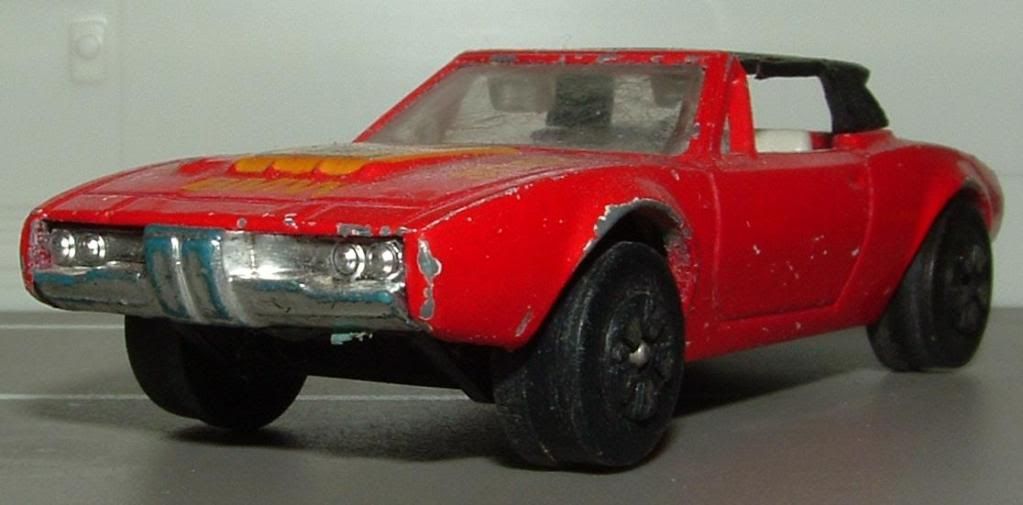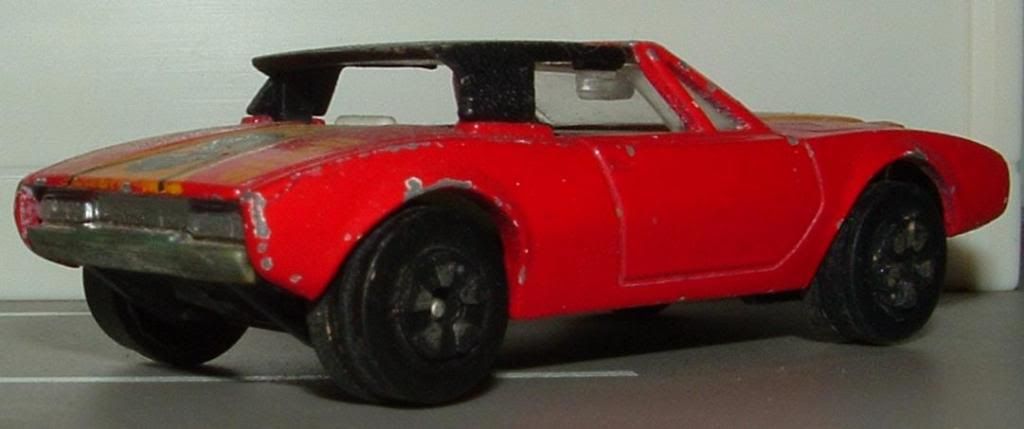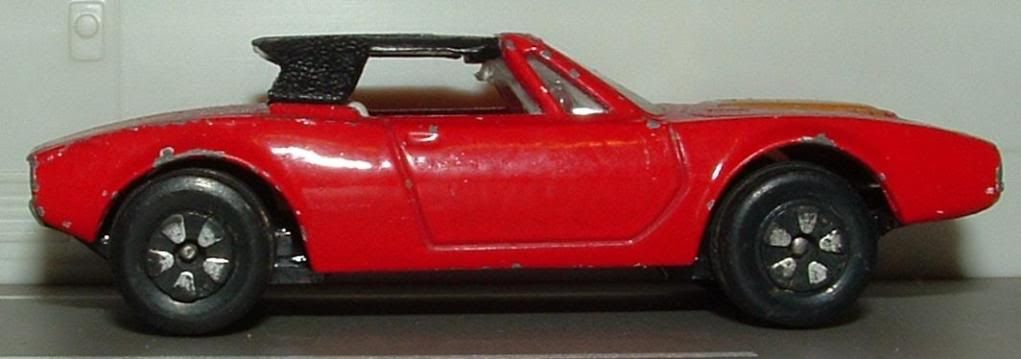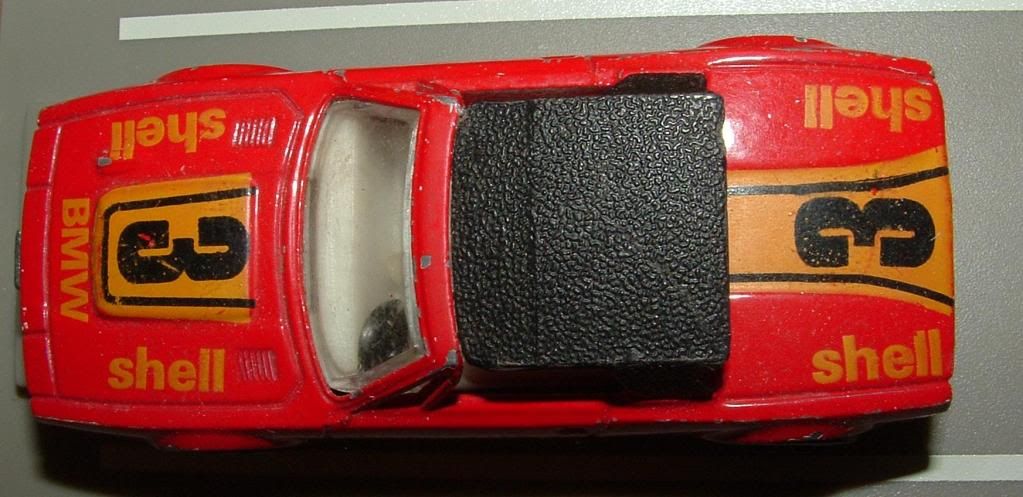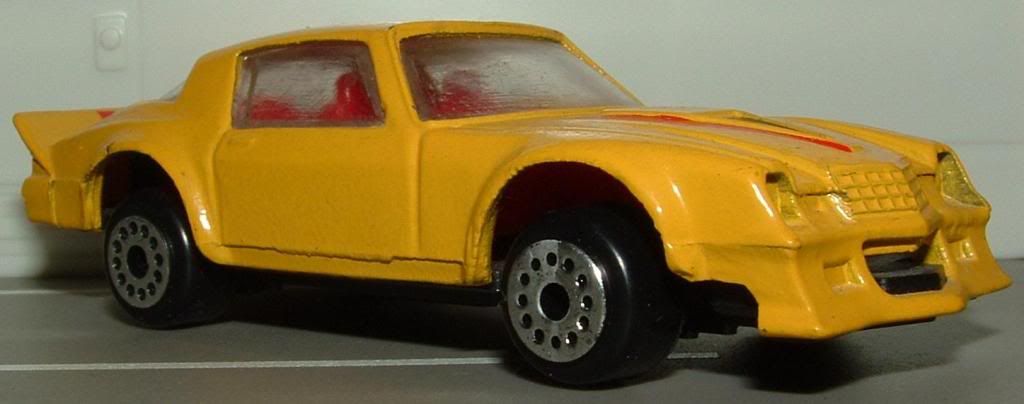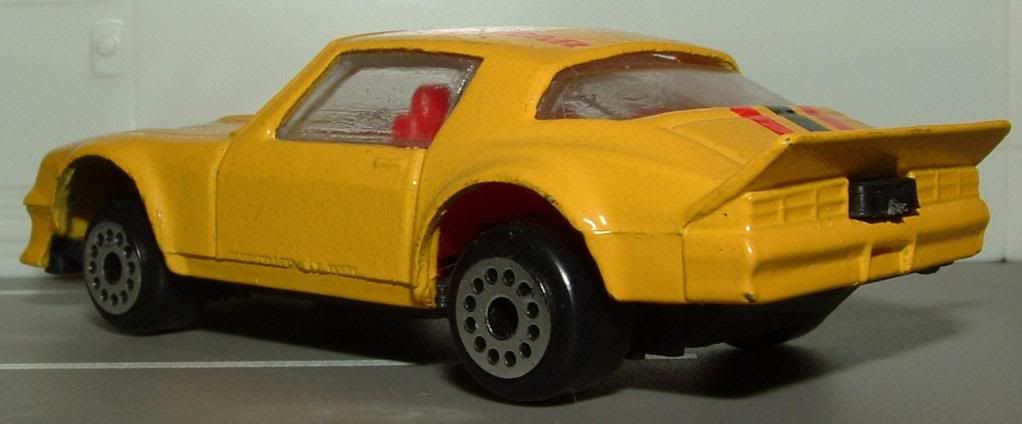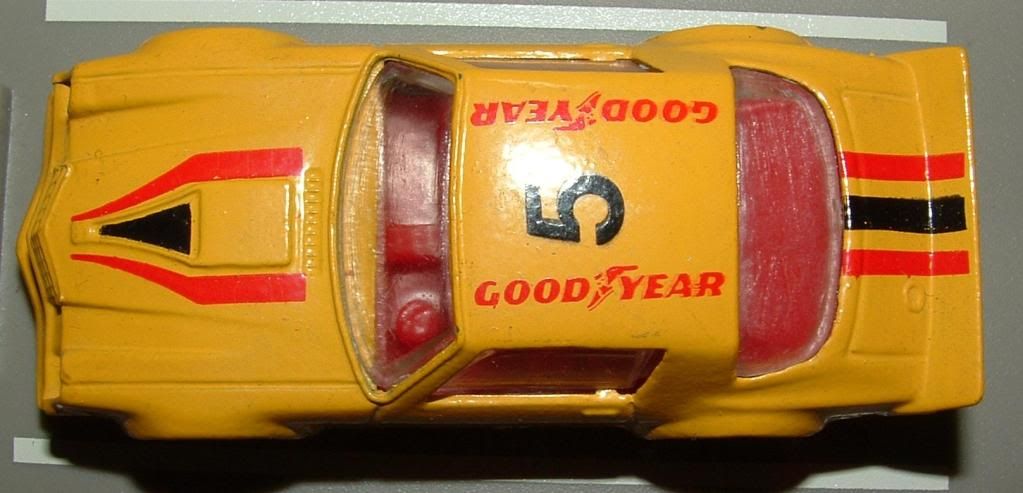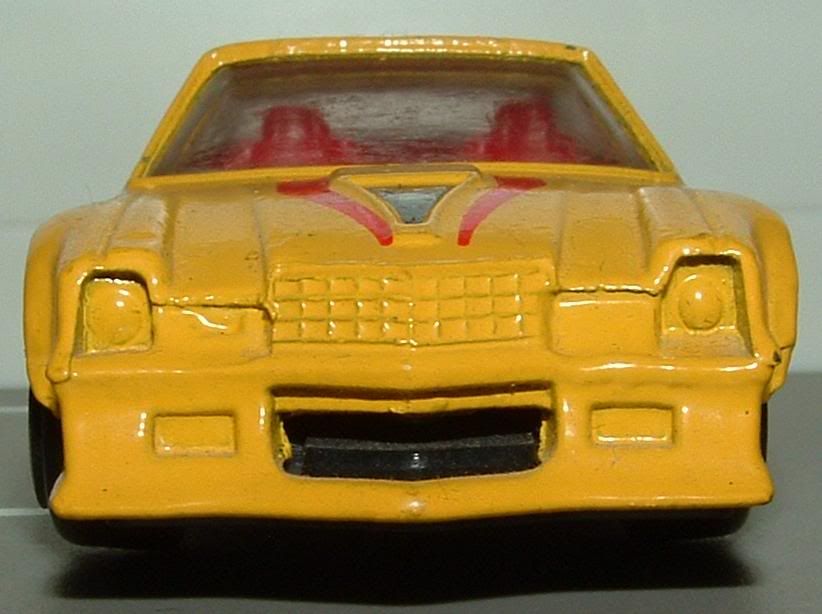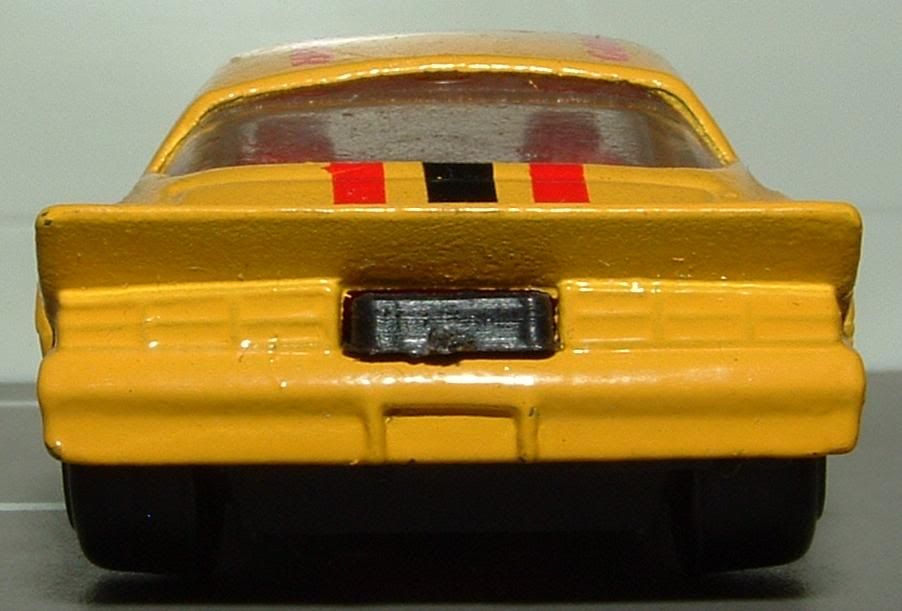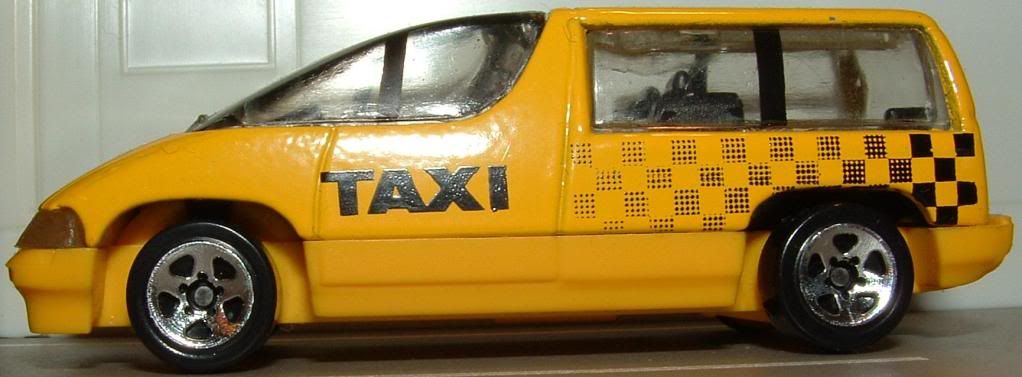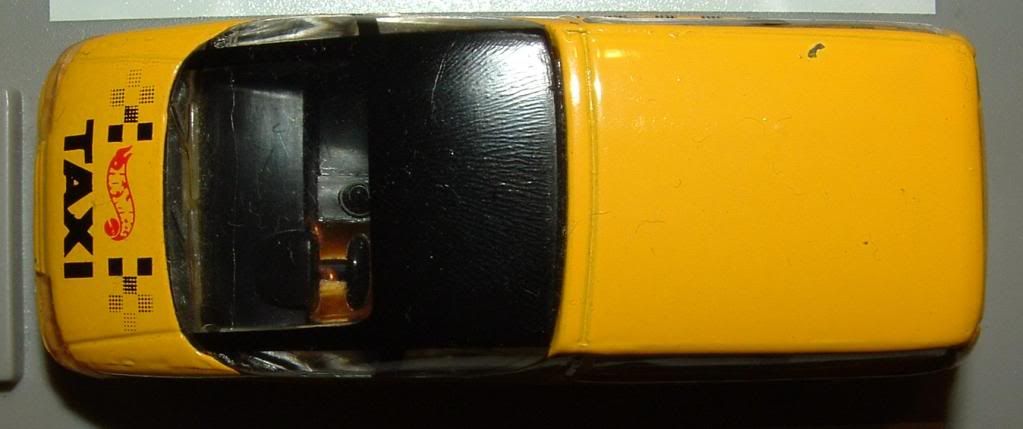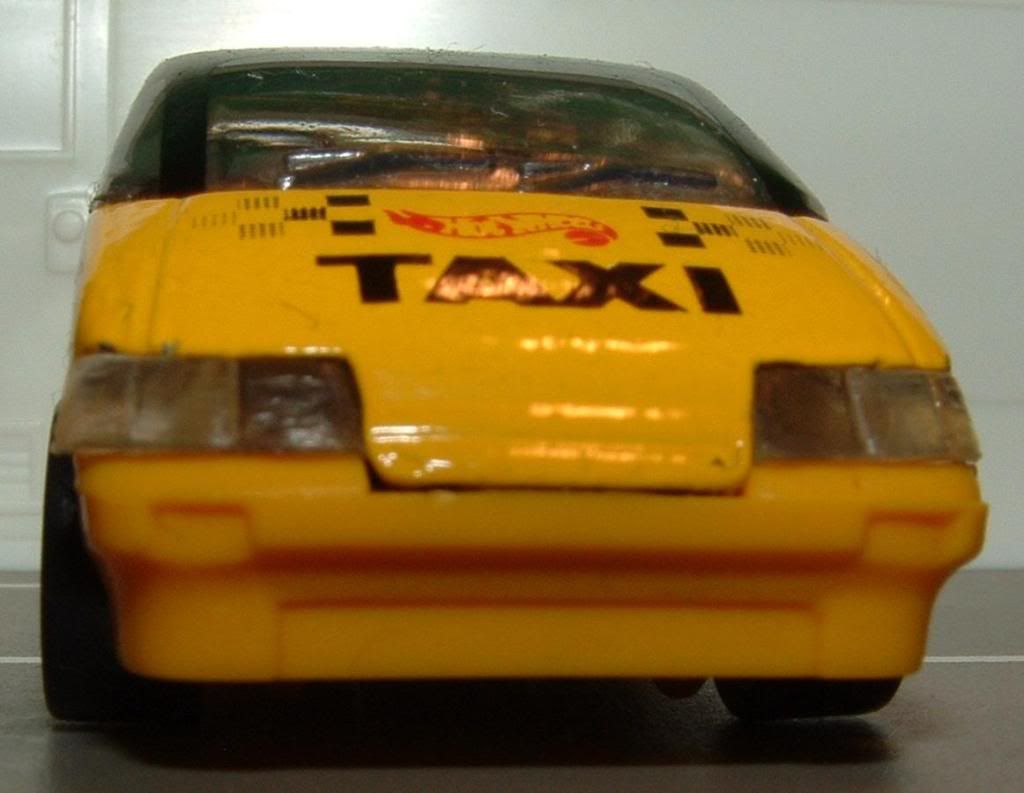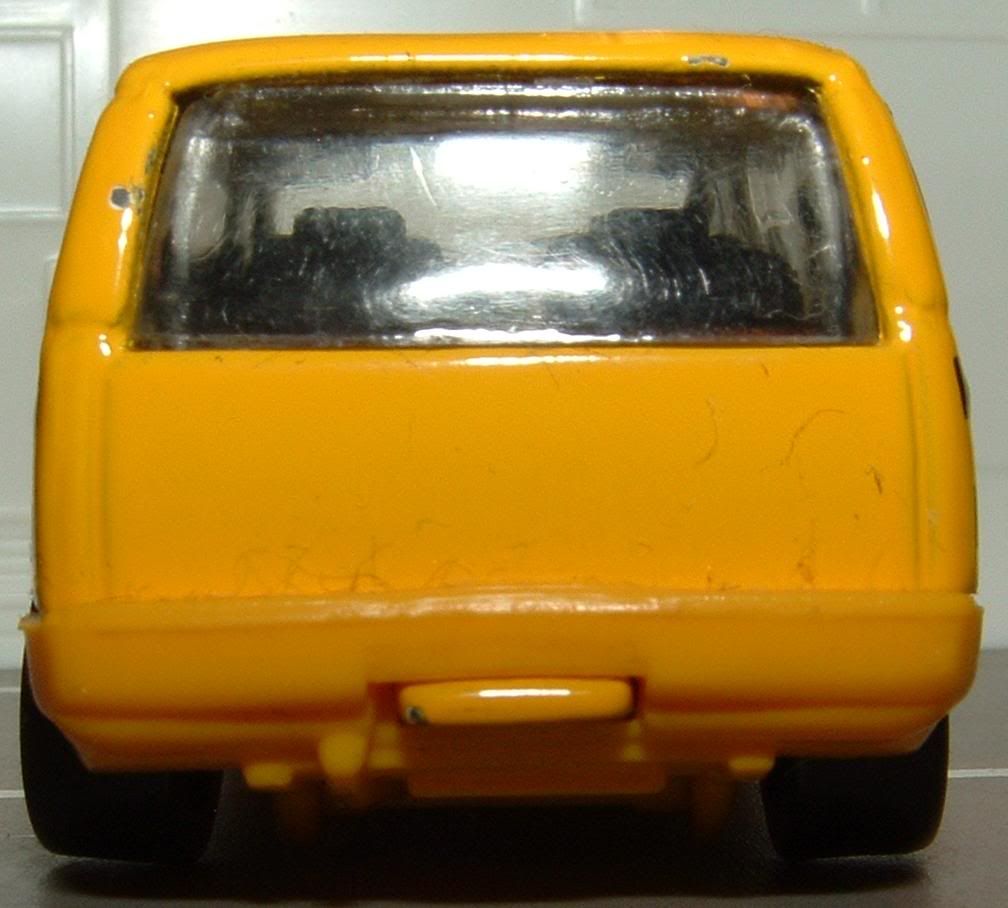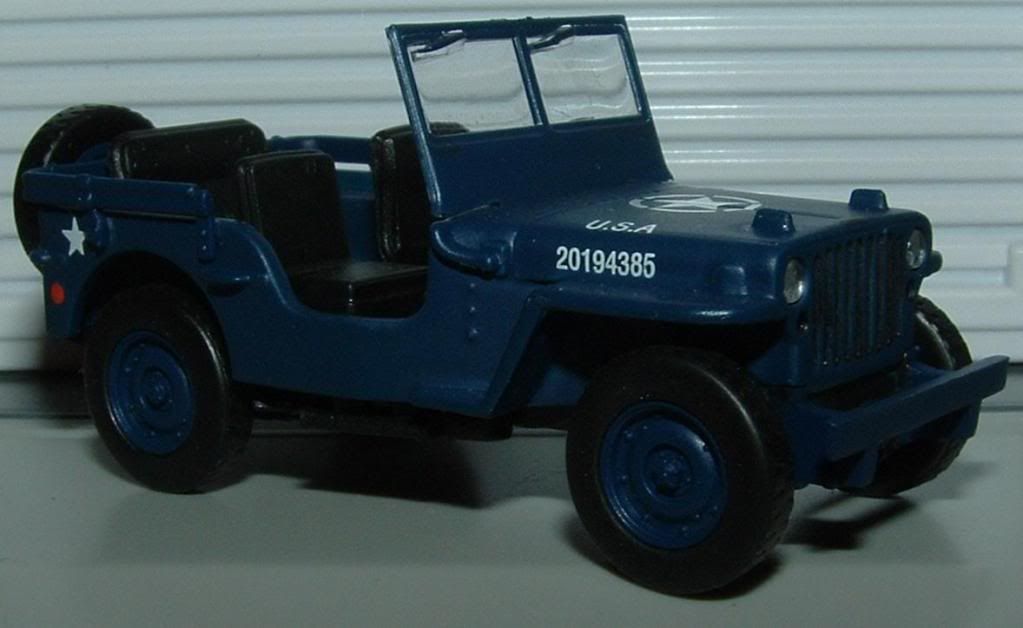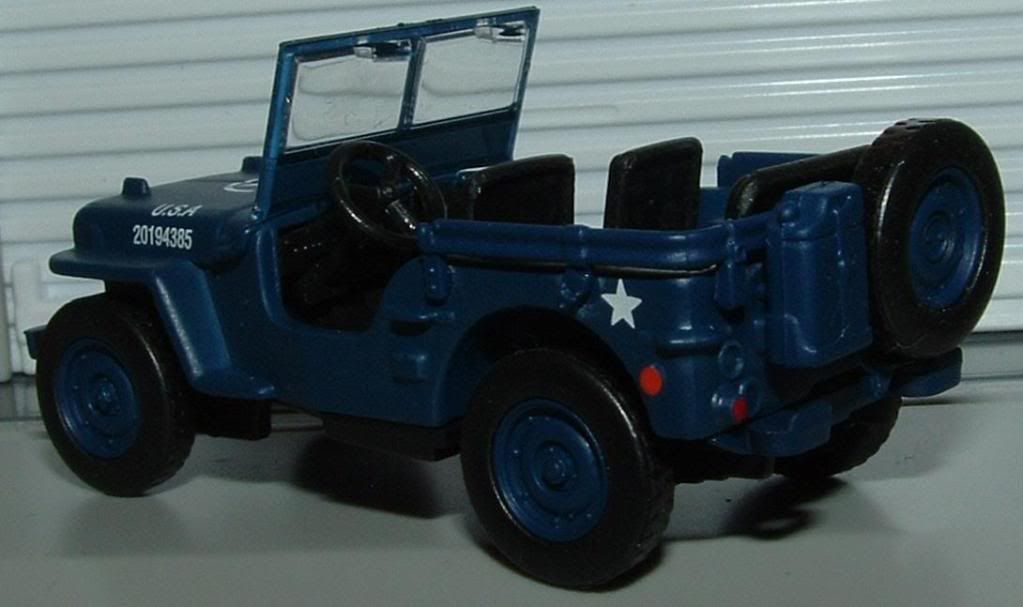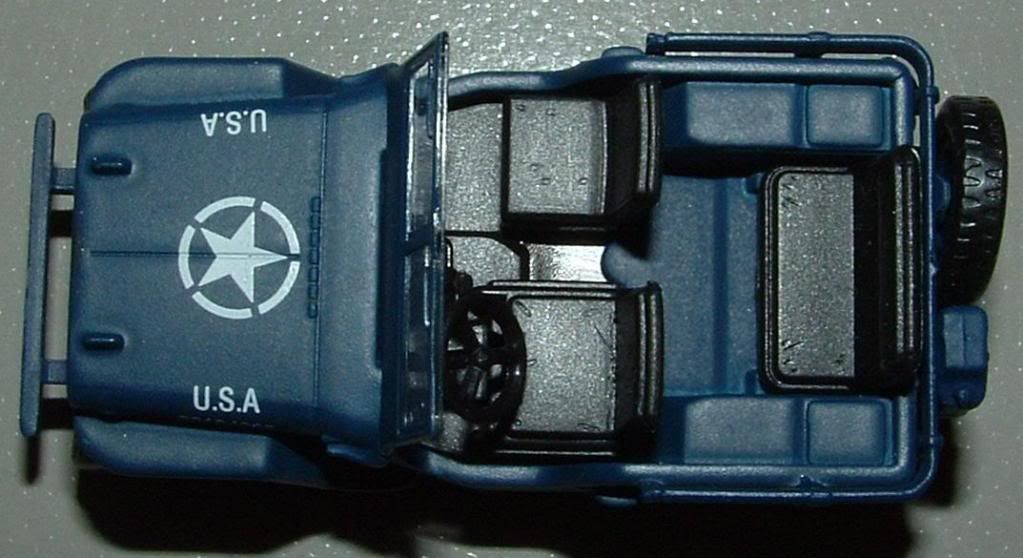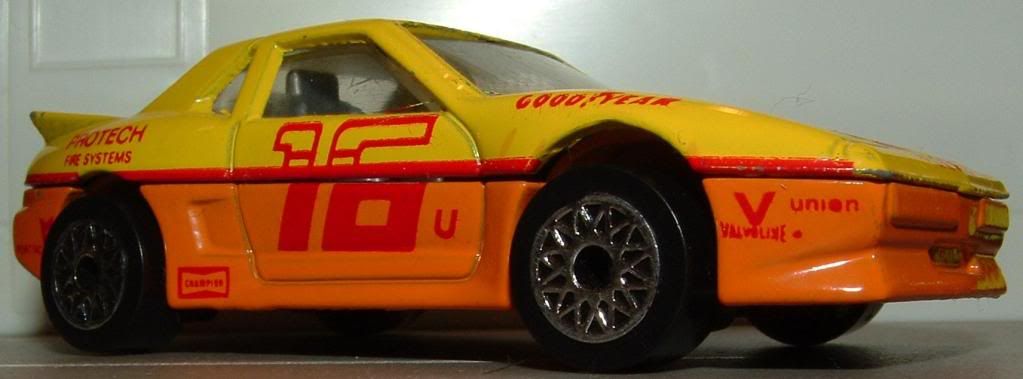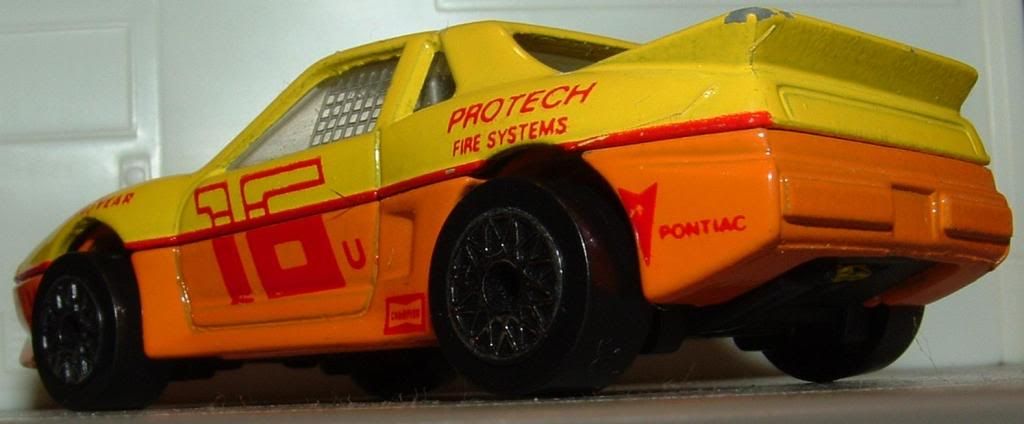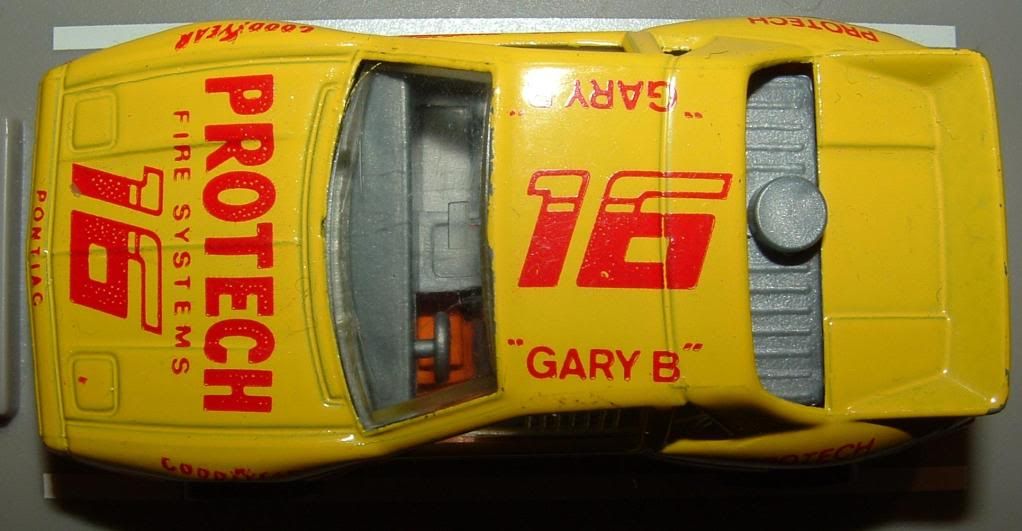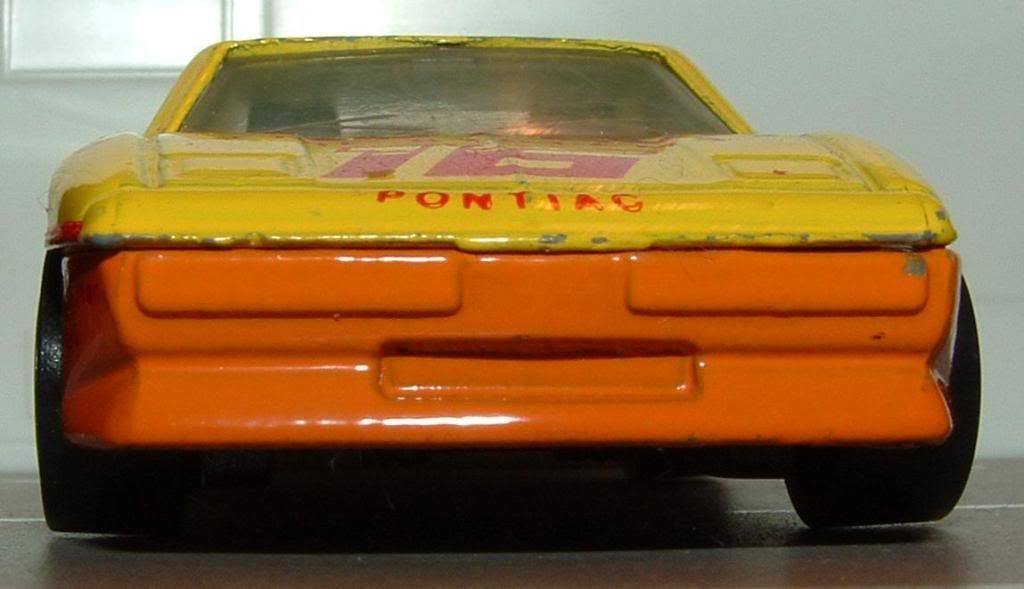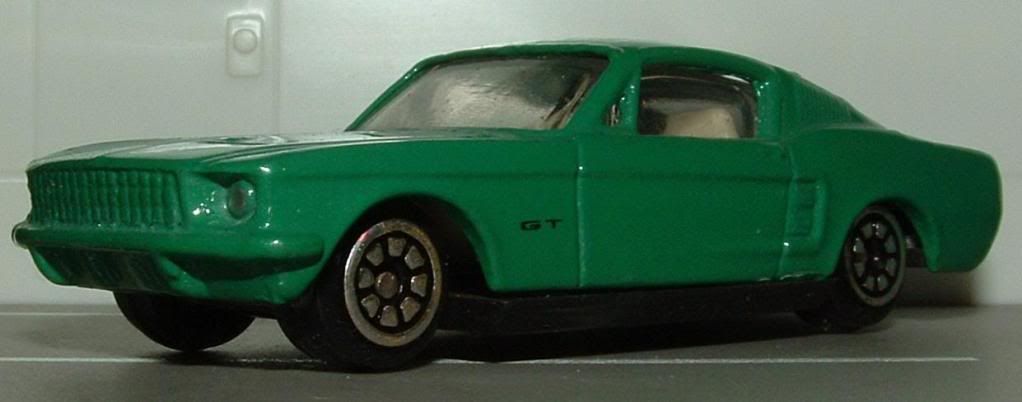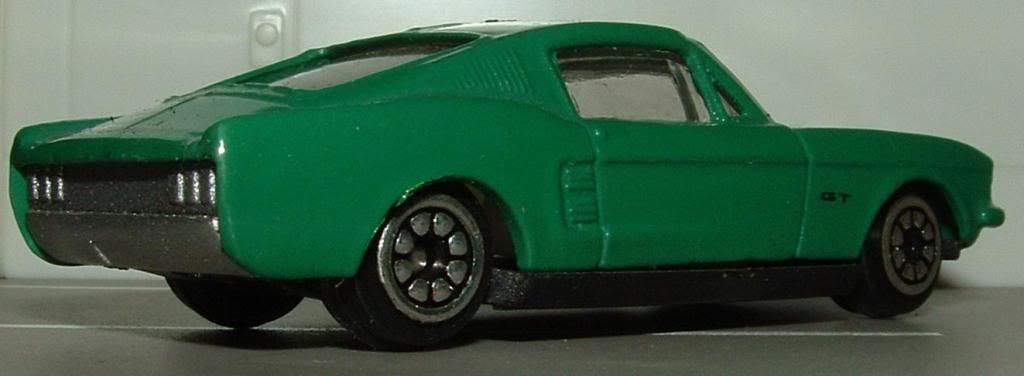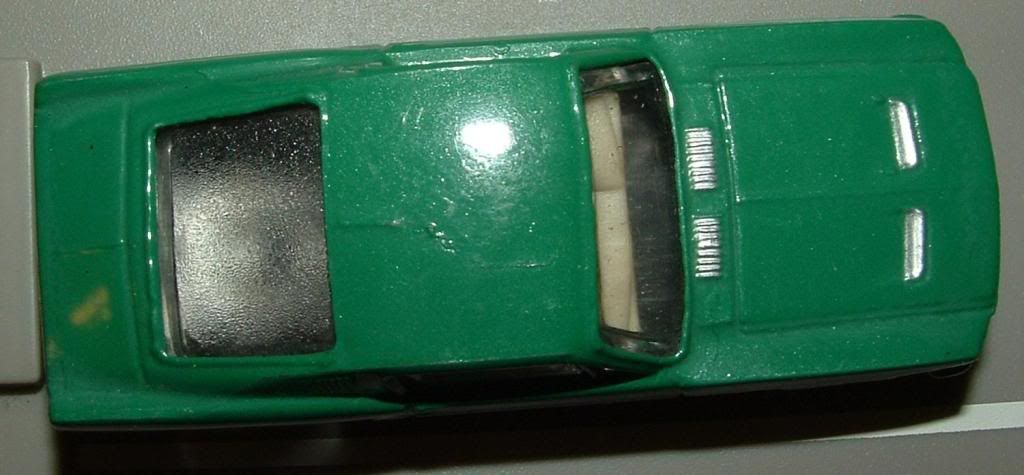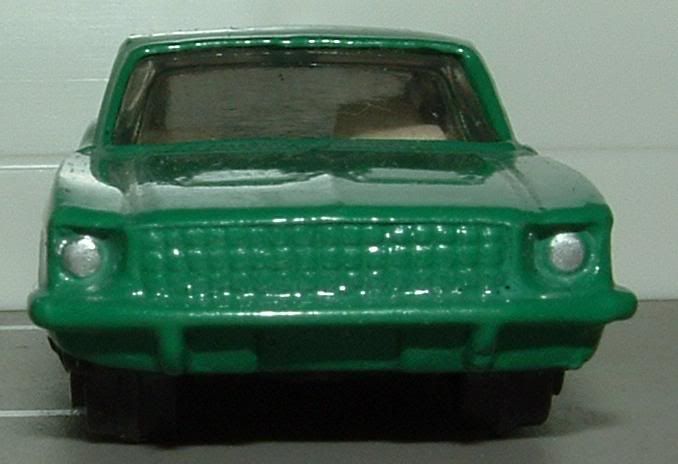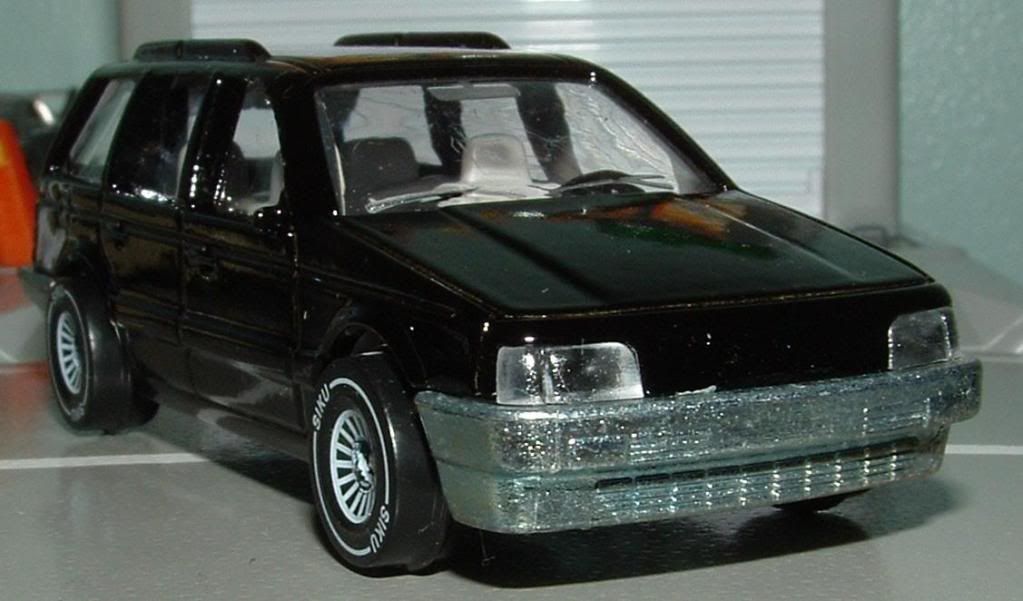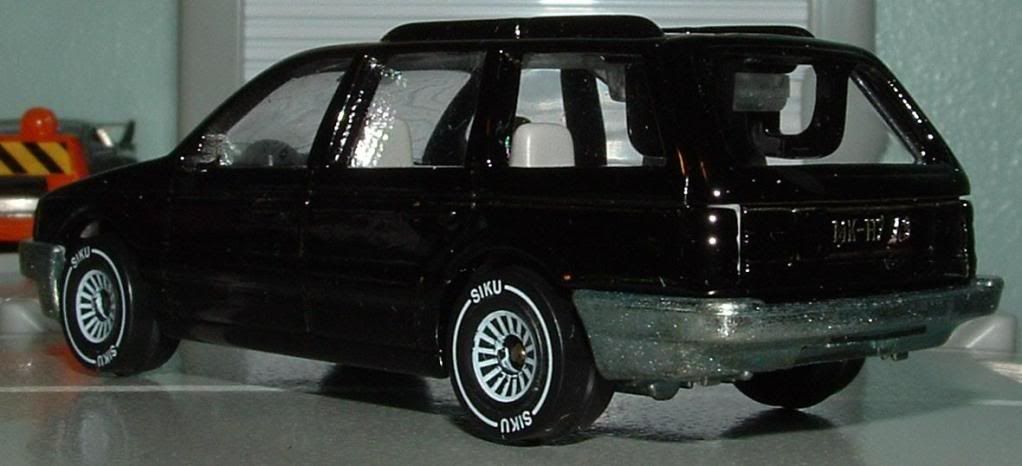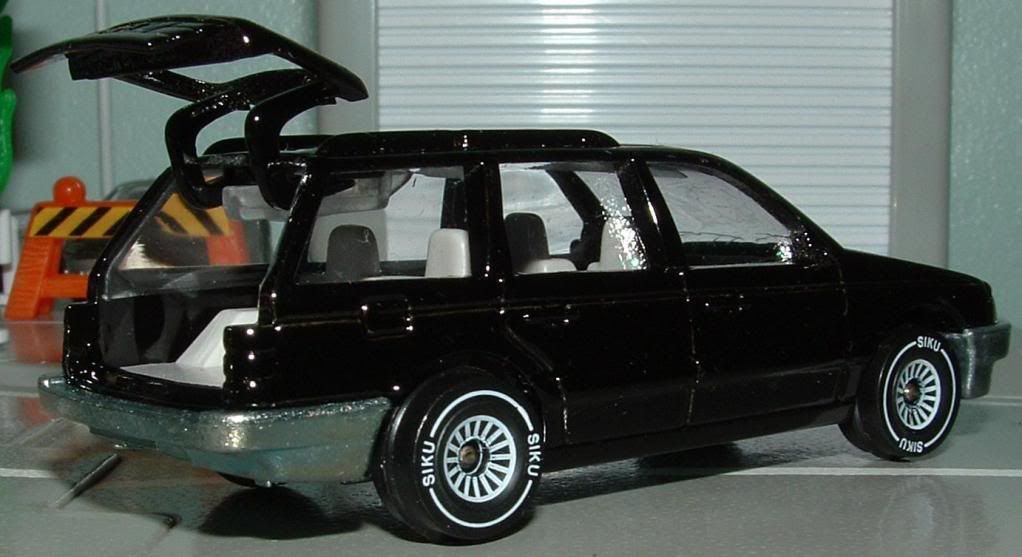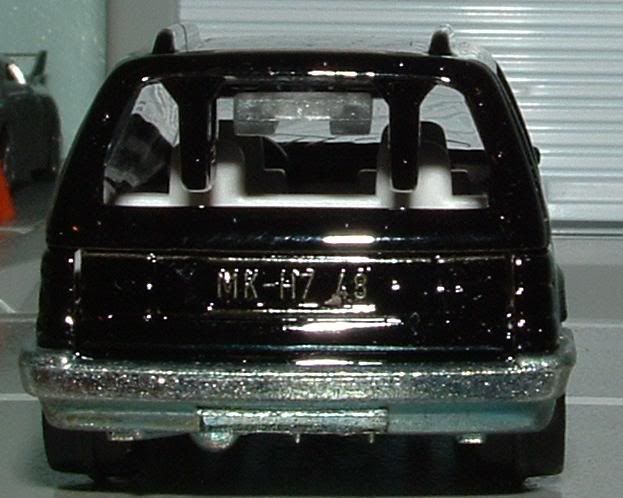
A blog focusing on 1/64 diecast from such popular brands as Hot Wheels, Matchbox, Johnny Lightning, M2 Machines, GreenLight, Tomica, Yat Ming, Majorette, MotorMax, Siku, Corgi, Guisval, Playart, Ertl, Zylmex, Racing Champions, & many more. Swifty's Garage features a daily Car Of The Day and news updates from your favorite brands!
Thursday, March 31, 2011
Car Of The Day: March 31, 2011
Today's car of the day is Playart's 1969 BMW Spicup.
Built as both a spider and a coupe, the Spicup was daring prototype made by Bertone and Marcello Gandini for BMW. A highlight of the design was the three-piece sliding top made of stainless steel, but this didn’t stop the Spicup from becoming a relative failure. It was totally out of place with BMW's refined model line and was not suitable for production.
Using the BMW 2500 as a backbone, the designers at Bertone shortened the chassis to fit a new body and interior. Inside, only the gauges and pedals remained stock. Bertone fitted a new dashboard, seats and carpet with two tone, green on green upholstery.
For more information and pictures of the real car please visit: BMW Spicup
This is a recent purchase from old442dude (thanks Eric!). Kudos to Playart for casting such an offbeat car, and I absolutely love the texture they put into the roof. This is quite possibly my favorite BMW design of all time.
Bertone describes the car: "The considerable dimensions of the mechanical components were handled by creating almost excessively fluid vertical lines. At the same time, the relatively important tail and wings become the car's focal point. The rollbars had to satisfy a combination safety needs and design criteria, and Bertone solved the problem with an automatic mechanism which also contained the elements for the transformation from spider to coupé and back again.
For the Spicup, Bertone used the larger inline-6 from the BMW 2800. This capable 2.8 liter, six-cylinder engine produced 170 bhp and drove the rear wheels through a 4-speed manual transmission. These components made the prototype fully functional.
Revealed at the 1969 Geneva Motor Show, the Spicup had a great resemblance to the Alfa Romeo Montreal prototype released at the 1967 Montreal Expo. This was especially true of the semi-hidden headlights with motorized flaps. However at the front Bertone kept BMW's 'double kidney' motif, but with obscure padded inserts.
Having little to do with past or future BMWs, the company quickly sold the Spicup to an enthusiastic owner that racked up over 60,000 miles (100,000 kms) traveling constantly from the Netherlands to Germany. This was largely possible due to the BMW 2500 underpinnings. At some point the body was painted orange and the engine cover was attached in unit with the hood.
In recent times the Spicup was found by Paul Koot in the Netherlands along with an Intermeccanica Indra. It was complete and a subsequent restoration was completed for Roland D'Ieteren in Belgium. Painted its original hue of green with triple-tone interior, the Spicup made its debut at the 2009 Villa d’Este Concours with BMW as the acting sponsor.
Wednesday, March 30, 2011
Race Car Of The Day: March 30, 2011
Today's car of the day is Zylmex's 1979 Chevrolet Camaro IROC racer.
The second generation Chevrolet Camaro is a pony car by the Chevrolet division of General Motors produced for the 1970 through 1981 model years. It was introduced February 26, 1970 It was longer, lower, and wider than the first generation Camaro, and is "widely considered the best all-around domestic musclecar ever produced." A convertible body-type was no longer available. GM engineers have said the second generation is much more of "A Driver's Car" than its predecessor.
For more information and pictures of the real car please visit: Chevrolet Camaro & International Race of Champions
Matchbox did the third generation IROC Camaro (by repainting their existing Camaro casting as an IROC racer) and this Zylmex is the only example of the second generation IROC racer. This was a recent purchase from Pegers. Thanks Dan!
International Race of Champions, better known as IROC, was an auto racing competition, promoted as an equivalent of an All-Star Game or The Masters. Drivers raced identically-prepared stock cars set up by a single team of mechanics in an effort to make the race purely a test of driver ability. It was run with a small field of invited drivers (6-12). It was created and developed in 1972 by David Lockton, the developer of the Ontario Motor Speedway, and launched in 1973 with Mark Donohue being the first driver to win the championship, in 1974. The cars used that year were Porsche Carrera RSRs. Donohue's win in the fourth and last race of that season was his last win as he died in a Formula One practice the next season. The series was not run in 1981, 1982, or 1983.
In 2007, IROC could not find a sponsor and postponed the first two races at Daytona and Texas. IROC went on hiatus for 2007 hoping to return with sponsor in 2008. In March 2008, IROC auctioned off its tools, equipment, cars, and memorabilia, and went out of business.
Tuesday, March 29, 2011
Minivan Of The Day: March 29, 2011
Today's car of the day is Hot Wheels' 1990 Chevrolet Lumina APV.
The Chevrolet Lumina APV was a minivan produced by General Motors for the 1990 to 1996 model years. In 1994 the APV was dropped from the name to make the name more consistent with the cars, and it was simply known as Lumina or Lumina Minivan. It is similar to the Pontiac Trans Sport and Oldsmobile Silhouette. In the Chevrolet van lineup, it slotted between the rear-wheel drive entry-level Astro minivan and the Chevy Van.
For more information and pictures of the real car please visit: Chevrolet Lumina APV
There's a little bit of irony here. The "Dustbuster Minivan" is in dire need of a real Dustbuster...or maybe a Plymouth Feather Duster. If you view the larger image of the overhead picture, you can see the black paint is having some issues. Likewise, this one could stand for some better detailing- especially on the back.
General Motors' first attempt at producing a minivan to compete with the Dodge Caravan and Plymouth Voyager, the Chevrolet Astro and its twin, the GMC Safari, failed to make a noticeable dent in Chrysler's almost total dominance of the minivan market in the late eighties, so this second attempt was made.
The Lumina APV was introduced as part of a proposed full line of Chevrolet Lumina vehicles that in the end, included The Lumina Coupe, Lumina Euro Coupe, Lumina Z34 Coupe, Lumina Sedan, Lumina Euro Sedan and Lumina APV Minivan. The "APV" designation stood for "All Purpose Vehicle" and while the vehicle itself was certainly versatile and featured many innovative features, the unusual space age design failed to resonate with many potential minivan buyers. Consumers were ultimately confused by having two different vehicles share the same name as well, so the successor to the Lumina APV was the Chevrolet Venture.
The vehicle shared the unibody frame, and componentry with the GM A platform.
SUV Of The Day: March 28, 2011 (Belated)
Today's car of the day is Kyosho's 1943 Willys MB.
The Willys MB US Army Jeep (formally the Truck, 1/4 ton, 4x4) and the Ford GPW, was manufactured from 1941 to 1945. The small four-wheel drive utility vehicles are considered the iconic World War II Jeep, and inspired many similar light utility vehicles. Over the years, the World War II Jeep later evolved into the "CJ" civilian Jeep. Its counterpart in the German army was the Volkswagen Kübelwagen, also based on a small automobile, but which used an air-cooled engine and lacked 4 wheel drive.
For more information and pictures of the real car please visit: Willys MB
Another recent Kyosho release, this is Jeep sports US Navy colors and looks quite sharp.
By now the war was underway in Europe, so the Army's need was urgent and demanding. Bids were to be received by July 22, a span of just eleven days. Manufacturers were given 49 days to submit their first prototype and 75 days for completion of 70 test vehicles. The Army's Ordnance Technical Committee specifications were equally demanding: the vehicle would be four-wheel drive, have a crew of three on a wheelbase of no more than 75 (later 80) inches and tracks no more than 47 inches, feature a fold-down windshield, 660 lb payload and be powered by an engine capable of 85 ft·lbf (115 N·m) of torque. The most daunting demand, however, was an empty weight of no more than 1,300 lb (590 kg).
Only two companies entered: American Bantam Car Company and Willys-Overland Motors. Though Willys-Overland was the low bidder, Bantam received the bid, being the only company committing to deliver a pilot model in 49 days and production examples in 75. Under the leadership of designer Karl Probst, Bantam built their first prototype, dubbed the "Blitz Buggy" (and in retrospect "Old Number One"), and delivered it to the Army vehicle test center at Camp Holabird, Maryland on September 23, 1940. This presented Army officials with the first of what eventually evolved into the World War II U.S. Army Jeeps: the Willys MB and Ford GPW.
Since Bantam did not have the production capacity or fiscal stability to deliver on the scale needed by the War Department, the other two bidders, Ford and Willys, were encouraged to complete their own pilot models for testing. The contract for the new reconnaissance car was to be determined by trials. As testing of the Bantam prototype took place from September 27 to October 16, Ford and Willys technical representatives present at Holabird were given ample opportunity to study the vehicle's performance. Moreover, in order to expedite production, the War Department forwarded the Bantam blueprints to Ford and Willys, claiming the government owned the design. Bantam did not dispute this move due to its precarious financial situation. By November 1940, Ford and Willys each submitted prototypes to compete with the Bantam in the Army's trials. The pilot models, the Willys Quad and the Ford Pygmy, turned out very similar to each other and were joined in testing by Bantam's entry, now evolved into a Mark II called the BRC 60. By then the U.S. and its armed forces were already under such pressure that all three cars were declared acceptable and orders for 1,500 units per company were given for field testing. At this time it was acknowledged the original weight limit (which Bantam had ignored) was unrealistic, and it was raised to 2,160 pounds (980 kg).
For these respective pre-production runs, each vehicle received revisions and a new name. Bantam's became the BRC 40, and the company ceased motor vehicle production after the last one was built in December 1941. After reducing the vehicle's weight by 240 pounds, Willys' changed the designation to "MA" for "Military" model "A". The Fords went into production as "GP", with "G" for a "Government" type contract and "P" commonly used by Ford to designate any passenger car with a wheelbase of 80 inches.
By July 1941, the War Department desired to standardize and decided to select a single manufacturer to supply them with the next order for another 16,000 vehicles. Willys won the contract mostly due to its more powerful engine (the "Go Devil") which soldiers raved about, and its lower cost and silhouette. The design features the Bantam and Ford entries had which were an improvement over Willys' were then incorporated into the Willys car, moving it from an "A" designation to "B", thus the "MB" nomenclature. Most notable was a flat wide bonnet, adapted from Ford GP.
By October 1941, it became apparent Willys-Overland could not keep up with production demand and Ford was contracted to produce them as well. The Ford car was then designated GPW, with the "W" referring to the "Willys" licensed design. During World War II, Willys produced 363,000 Jeeps and Ford some 280,000. Approximately 51,000 were exported to the U.S.S.R. under the Lend-Lease program.
A further 13,000 (roughly) amphibian jeeps were built by Ford under the name GPA (nicknamed 'Seep' for Sea Jeep). Inspired by the larger DUKW, the vehicle was produced too quickly and proved to be too heavy, too unwieldy, and of insufficient freeboard. In spite of participating successfully in the Sicily landings (July 1943) most GPAs were routed to the U.S.S.R. under the Lend-Lease program. The Soviets were sufficiently pleased with its ability to cross rivers to develop their own version of it after the war (GAZ-46).
Sunday, March 27, 2011
Car Of The Day: March 27, 2011
Today's car of the day is Matchbox's 1985 Pontiac Fiero.
The Pontiac Fiero was a mid-engined sports car that was built by the Pontiac division of General Motors from 1984 to 1988. The Fiero—meaning "proud" in Italian and "wild", "fierce", or "ferocious" in Spanish—was designed by George Milidrag and Hulki Aldikacti as a Pontiac sports car. The Fiero was the first two-seater Pontiac since the 1926 to 1938 coupes, and also the first mass-produced mid-engine sports car by a U.S. manufacturer. Many technologies incorporated in the Fiero design such as plastic body panels were radical for its time. Alternative names considered for the car were Sprint, P3000, Pegasus, Fiamma, Sunfire, and Firebird XP. The Fiero 2M4 (2-seat, Mid-engine, 4-cylinder) was on Car and Driver magazine's Ten Best list for 1984. The 1984 Fiero was the Official Pace Car of the Indianapolis 500 for 1984, beating out the new 1984 Chevrolet Corvette for the honor.
370,168 Fieros were produced over the relatively short production run of 5 years; by comparison, 163,000 Toyota MR2s were sold in its first 5 years. At the time, its reputation suffered from criticisms over performance, reliability and safety issues. Today however, compared to less adventurous attempts at two-seaters such as the Ford EXP, the unique style of the Fiero compared to other American cars has left it a cult following as a collectible car. It remains a popular chassis for rebodies and even electric conversions.
For more information and pictures of the real car please visit: Pontiac Fiero
Obviously modified for racing purposes, this was a favorite model of mine as a child. It spent a lot of time near the front of the pack in the races I ran. And despite surviving my childhood it's not in that bad of shape.
Already selling the Corvette, General Motors management and accountants were opposed to investing in a second two-seater sports car. But in 1979, during the oil crisis, management saw a market opportunity for a fuel-efficient sporty commuter car and design work on the Fiero commenced. To this end, it was fitted with a fuel efficient version of GM's 2.5L 4-cylinder "Iron Duke" engine capable of 27 mpg-US (8.7 L/100 km; 32 mpg-imp) in the city and 40 mpg-US (5.9 L/100 km; 48 mpg-imp) on the highway with the economy-ratio transmission option. These figures are U.S. Environmental Protection Agency test-circuit results, published by Pontiac, and confirmed from multiple sources. It was impressive mileage for a 2.5 liter engine of the period, and still good by today's standards, but the 3-speed automatic reduced highway mileage to only 32 mpg-US (7.4 L/100 km; 38 mpg-imp). With respect to fuel economy, the Fiero would appeal to a market niche for which the Corvette with its V8 engine was unsuitable.
A mid-engine layout was chosen as a way to reduce both aerodynamic drag and vehicle weight to improve fuel efficiency, and also for its handling, traction, and braking benefits. The sports car potential of the mid-engine layout was not fully realized when the Fiero debuted. In line with its market position, the tires, brakes, and some suspension components were carried over from other GM economy cars (like the Chevrolet Citation and Chevrolet Chevette) so the Fiero could be priced appropriately. As a result, the handling and cornering abilities of the initial Fiero were merely on par with other contemporary sporty coupes (Road & Track 1985). The public had high expectations for the Fiero with its mid-engine layout and futuristic styling, which resembles more exotic mid-engine sports cars costing much more. While initially garnering good reviews for its handling (Motor Trend 1984), the Fiero soon received disappointing reviews, as the automotive critics expected higher performance from a mid-engine two-seater. Despite the critical press, the Fiero sold extremely well and Pontiac operated three shifts at the factory during 1984, and could not keep up with initial demand.
The sharing of suspension components with other GM cars meant the rear suspension and powertrain was almost identical to that of the Chevrolet Citation and Pontiac Phoenix; the Fiero even included rear tie rod ends attached to a "steering knuckle", although these were hard-mounted to the engine cradle and only used for maintaining the rear tire alignment. The front suspension was derived from the Chevrolet Chevette, and Chevette enthusiasts found that they could upgrade their undersized front brakes and rotors using Fiero parts.
By 1985, the oil crisis was a thing of the past and demand developed for a Fiero having more engine power and better sports car performance. Pontiac responded by introducing the GT model which included upgraded suspension tuning, wider tires, and a V6 engine having 43 horsepower (32 kW) more than the base 4-cylinder. In 1986, the GT model was restyled to look even more sleek.
Numerous changes were made to the 1988 Fiero. The most significant was a completely redesigned suspension (and parts of the space frame) to realize the potential of the mid-engine layout. Now unique to the Fiero, the new suspension included new two piece brake calipers and upgraded brake rotors for 1988. The available I4 & V6 engines benefited from evolutionary improvements, but the planned availability of turbochargers and newer DOHC engines did not happen before production ended.
Officially, production ended because of an internal GM forecast of insufficient future profits due to an expected decrease in overall demand for two-seater sports cars, however this decision was commensurate with heavy media coverage of Fiero engine fires. GM's forecast may have been a year premature, as the actual sales in 1988 were lower than prior years but still double the forecast. The Fiero was still turning a small profit for the company even in its final year
Saturday, March 26, 2011
Car of the Day:March 26, 2011

The car for today is the Motormax 1971 Ford Mustang Boss 351.

Ford's reign of "Total Performance" was rapidly drawing to a close, but something was still kicking in its muscle car stall: the 1971 Ford Mustang Boss 351.
Based on the redesigned Mustang SportsRoof, the new Boss was built to qualify a Trans-Am counterpart, a purpose rendered moot by Ford's late-1970 retirement from most forms of organized racing. The upside was that the Boss 351 was probably the only 1971 performance car with a genuine competition-grade engine.
Unfortunately, it had to saddle up the biggest Mustang ever. Wheelbase for the 1971 Ford Mustang Boss 351 was up one inch, and the car gained 2.1 inches in overall length, 2.8 inches in width, and put on about 100 pounds. Its styling was influenced by the last of the Shelby models, which didn't survive into '71. That left the Mach 1 and Boss 351 as Mustang's similarly styled performance flag bearers.

The 1971 Ford Mustang Boss 351
Specifications
Wheelbase, inches: 109.0
Weight, lbs: 3,281
Number built: 1,806
Base price: $4,124
Top Available Engine
Type: ohv V-8
Displacement, cid: 351
Fuel system: 1 x 4bbl.
Compression ratio: 11.0:1
Horsepower @ rpm: 330 @ 5400
Torque @ rpm: 370 @ 4000
Representative Performance
0-60 mph, sec: 5.8
1/4 mile, sec. @ mph: 13.9 @ 10


For more on the '71 Mustang, check out to learn more.


I received this Mustang by Motormax in a box from James. Think this part of a Canadian only series of drag car themed release. The model has a metal body and base. The base is held on by two screws and the base also has a clear coat. Chrome like rims and rubber tires help set off this sweet Stang. Also feature jeweled headlights as well. The American Graffiti on the rear fenders is the only letdown. With all the positives though, that can be overlooked as just a small complaint.
Thanks James.

Friday, March 25, 2011
Car Of The Day: March 25, 2011
Today's car of the day is Golden Wheel's 1967 Ford Mustang GT.
The first-generation Ford Mustang is the original pony car, manufactured by Ford Motor Company from 1964 until 1973.
Initially introduced as a hardtop and convertible, with fastback version put on sale following year. At the time of introduction Mustang, sharing its underpinnings with Falcon, was slotted into a compact car segment.
With every next revision Mustang saw increase in overall dimensions and in engine power, thus as a result, by the 1971 Mustang has entered a muscle car market. After initial surge, sales were at steady decline and Ford began working on new generation. When oil crisis hit in 1973, Ford was prepared having already designed smaller Mustang II, which had nothing in common with first generation cars.
For more information and pictures of the real car please visit: Ford Mustang
This is a recent RAOK from Pegers (thanks Dan!) and dates to the 1993 Valvoline promo ten car set. At the time that set was a very hot commodity (up until then, no one had done any of the vintage muscle cars in 1/64 since they were new cars), and it was not unheard of to see examples trading for $25-30. And then Johnny Lightning, Hot Wheels, and Matchbox brought out some classic muscle cars of their own and this set's value dropped like a rock as most of the cars were quickly covered (better) by other manufacturers. This is one of the better cars from the set. I think it's a safe guess to say this one is green to cash in on the "Bullitt" chase scene. Note both the color and the lack of a grill ornament.
The 1967 model year Mustang was the first model to feature a major redesign with the installation of a big-block V8 engine. The overall size, interior and cargo space were increased. Exterior trim changes included concave taillights, side scoop (1967) and chrome (1968) side ornamentation, square rear-view mirrors, and usual yearly wheel and gas cap changes. The high-performance 289 option was placed behind the newer 320 hp (239 kW) 390 cu in (6.4 L) FE engine from the Ford Thunderbird, which was equipped with a four-barrel carburetor. A 390 GT engine, and a 4-speed manual transmission recorded quarter mile times of approximately 13 seconds and trap speeds of over 105 mph (169 km/h). During the mid-1968 model year, a drag racer for the street could be ordered with the optional 428 cu in (7 L) Cobra Jet engine which was officially rated at 335 hp (250 kW) all of these Mustangs were issued R codes on their VIN#'s.
The 1967 and 1968 models discontinued the "Pony Interior" in favor of a new deluxe interior package, which included special color options, brushed stainless steel (1967) or woodgrain (1968) trim, seat buttons, a tilt steering wheel, and special interior paneling. The 1968 models that were produced during 1968 were also the first year to incorporate 3 point lap belts as opposed to the standard lapbelts The air-conditioning option was fully integrated into the dash, the speakers and stereo were upgraded, and unique center and overhead consoles were options. The fastback model offered the option of a rear fold-down seat, and the convertible was available with folding glass windows. Gone too was the Rally-Pac, since the new instrument cluster had provisions for an optional tachometer and clock. Its size and shape also precluded the installation of the accessory atop the steering column.
The California Special Mustang, or GT/CS, was visually based on the Shelby model and was only sold in Western states. Its sister, the 'High Country Special', was sold in Denver, Colorado. While the GT/CS was only available as a coupe, the 'High Country Special' model was available in fastback and convertible configurations in 1966 and 1967 and only as a coupe in 1968.
The Mustang fastback gained popular culture status when used in the crime thriller Bullitt (1968). Lt. Frank Bullitt, played by actor Steve McQueen, drove a modified Highland Green 1968 Mustang GT fastback with 390 cu in (6.4 L) 4V engine, chasing two hitmen in a black 1968 Dodge Charger in the film's car chase through the streets of San Francisco.
Thursday, March 24, 2011
Car Of The Day: March 24, 2011
Today's car of the day is Siku's 1988 Volkswagen Passat Variant GT.
The Volkswagen Passat is a large family car built by Volkswagen Passenger Cars through six design generations since 1973. Slotting between the Volkswagen Golf / Volkswagen Jetta, and the Volkswagen Phaeton in the current Volkswagen line-up, the Passat and its derivatives have been badged variously as Dasher, Santana, Quantum, Magotan, Corsar and Carat.
In 2008, Volkswagen extended its range with the launch of the Passat CC, a "4-door coupé" version of the Passat.
On January 9, 2011, Volkswagen announced that the New Midsize Sedan being built in Chattanooga, Tennessee for the North American market would be named the Passat.
For more information and pictures of the real car please visit: Volkswagen Passat
This car represents what I have always loved about Siku. Yeah, I still hate that it's 1/55 instead of 1/64, but the casting is good. More importantly, this is the type of car Siku did best- plain Jane family cars. Wagons were extremely popular in the Siku range. At some point in the last few years though Siku has lost their way. Generics added to the range. More super cars, less regular cars. I suppose they are trying to out-Hot Wheels Hot Wheels, but it's not going to work. It didn't work for Topper, Matchbox (Superfast), Corgi (Whizzwheels), or anyone else. Hot Wheels does what it does very well. Siku is no longer the quintessential German diecast manufacturer. That honor goes to the not even available at retail Grell models now.
The third generation Passat was introduced in March 1988 in Europe, 1990 in North America, and 1995 in South America. Its curvy looks were a contrast from the boxy appearance of its predecessor and owed much to the "jelly mould" style pioneered by Ford with the Sierra. The lack of a grille made the car's front end styling reminiscent of older, rear-engined Volkswagens such as the 411, and also doubled as a modern styling trend.
At the time it was the first Passat to be built on a Volkswagen-designed platform, rather than sharing one with an Audi saloon. The car, although designated B3 in Volkswagen's platform nomenclature, was based largely on the A platform as used for the smaller Golf model, but was stretched in all directions. Many components are shared directly between these vehicles. Only 4-door saloon and 5-door estate versions were available, without the fastback option of previous models. It was marketed under the Passat name in all markets; in North America, this was a first.
The fuel injected petrol engines gave better performance and refinement than the carburettor units previously used. They were mounted transversely, and the floorpan was engineered to accept Volkswagen's 'Syncro' four-wheel drive system. Engine options were the 2.0 litre 16 valve engine in the GL model, 1.8 litre engine in the CL model (not available in North America, all CLs, GLs, and GLSs had the 2.0 16v), Volkswagen's new 2.8 litre VR6 engine (also used in the Golf and Corrado) in the GLX/GLS model (introduced in 1991 in Europe and 1992 in North America), and the G60 engine (only available on the Syncro model in Canada for the North American market). The VR6 engine gave the top-of-the-range Passat a top speed of 224 kilometres per hour (139 mph). The 1.9 litre diesel engine was also available as an option.
Subscribe to:
Posts (Atom)



